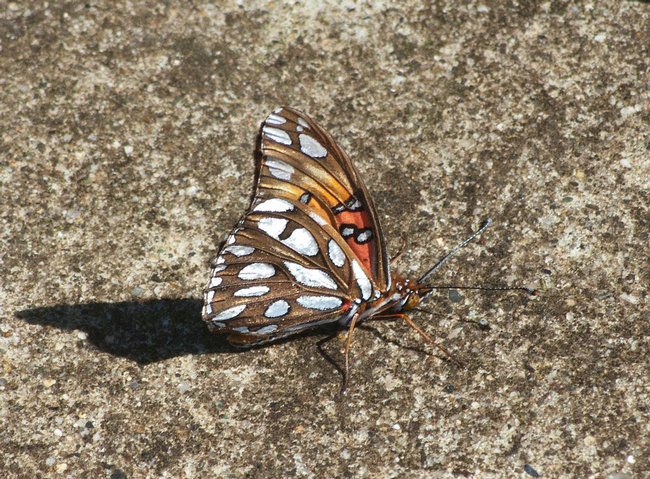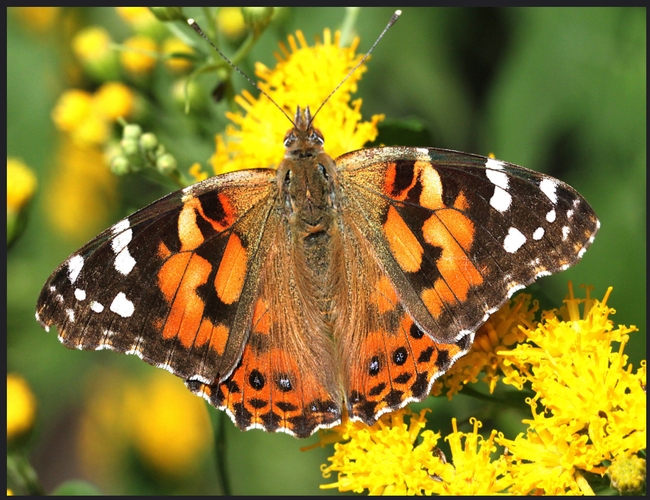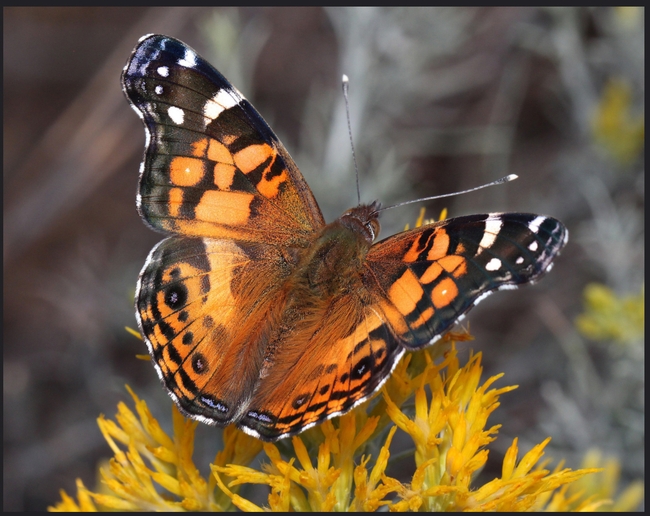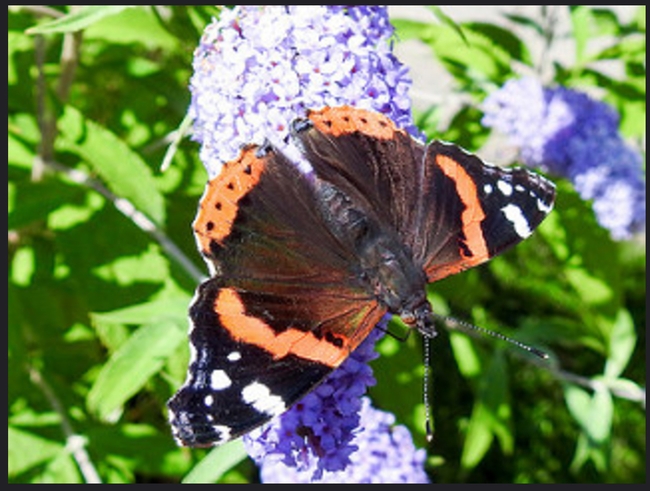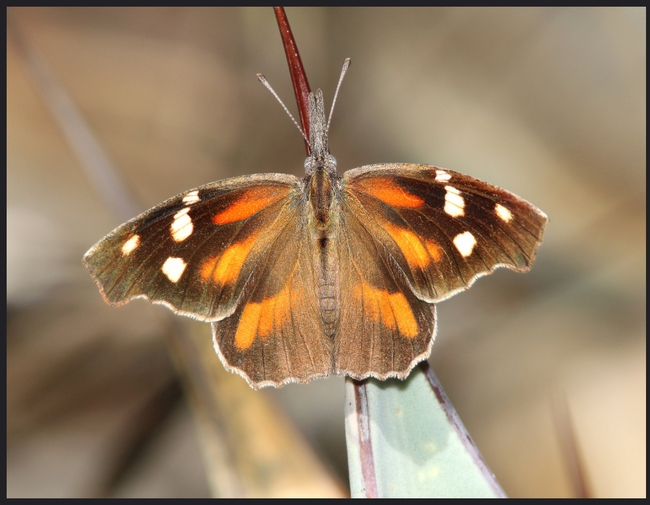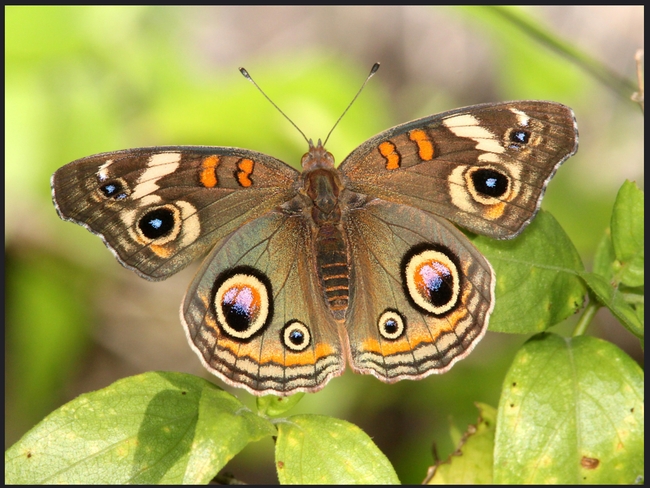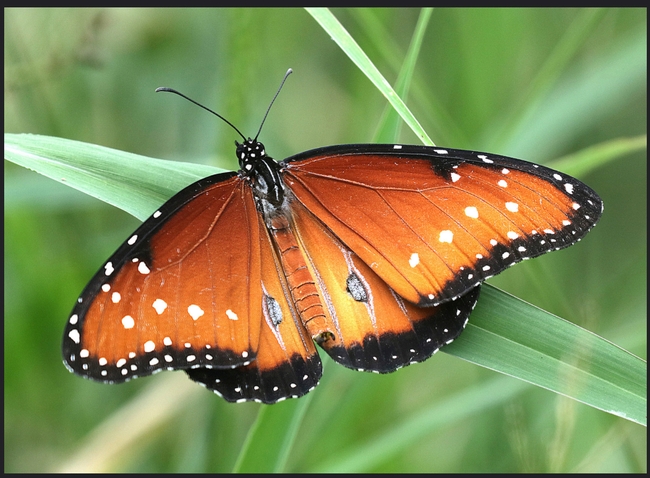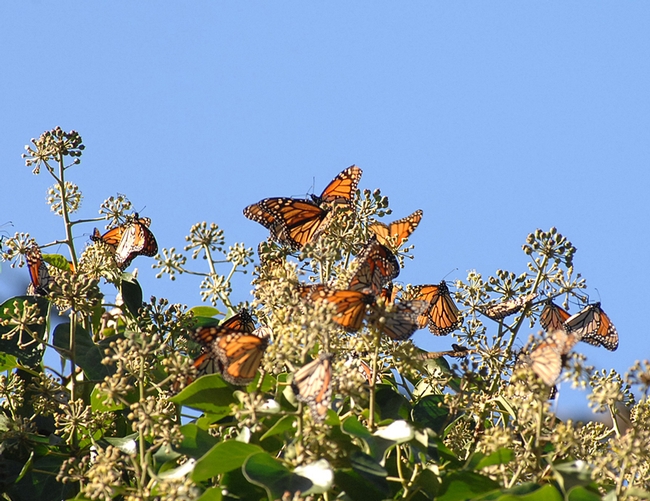The Monarch is well known and celebrated. However, central California has several migrating species and one of them, the Gulf Fritillary, actually moved into California because of horticultural plantings of passion vine. I have seen all but one of these (Common Buckeye) in my own yard north of Salinas. Planting host and nectar plants in your yard will enable you to view these and other beautiful insects. Host plants are those that butterflies will lay eggs on for emerging caterpillar larvae to feed. Nectar plants are the plants that adult butterflies feed upon. Both are important in providing habitat for butterflies.
Gulf Fritillary - Its host plants are passion vine and passion flower. Nectar plants include lantana, butterfly bush, zinnia, aster, thistle, verbena, hibiscus, and salvia.
Painted Lady - Its host plants include thistle, mallows, hollyhock, legumes, asters and many others. Nectar plants include thistles, red clover, asters, and many others.
American Lady– Its host plants include plants in the sunflower family, asters, pussy-toes, everlasting, evax, ironweed, and cudweed. Nectar plants include a variety of flowers. It also feeds on tree sap and decaying fruit.
Red Admiral– Its host plants are of the nettle family, false nettle, pellitory, mamaki, baby's tears, and possibly hops. As adults, Red Admirals prefer sap flows on trees, fermenting fruit, and bird droppings, visiting flowers only when these are not available. Nectar plants are common milkweed, red clover, aster, buddleia, and alfalfa, among others.
American Snout– Its hosts are several species of hackberry including sugarberry. Nectar plants are aster, dogbane, dogwood, goldenrod, sweet pepperbush, and others.
Common Buckeye- Its host plants are in the snapdragon family, toadflax, the plantain family and the acanthus family. Nectar plants are composites, including aster, chickory, gumweed, knapweed, and tickseed sunflower. Dogbane, peppermint, and other flowers are also visited.
Queen – Its host plants are milkweeds and milkweed vines. Nectar plants are milkweeds, fogfruit, and shepherd's needle.
Monarch – Its host plants are milkweeds and milkweed vines. Nectar plants are all milkweeds. Early in the season before milkweeds bloom, Monarchs visit a variety of flowers including dogbane, lilac, red clover, lantana, thistles, and salvia. In the fall adults visit composites including goldenrods, blazing stars, ironweed, and tickseed sunflower.
Which butterfly species have you found in your yard? Remember, plant the host and nectar plants and the butterflies will come!
Useful References:
https://www.butterfliesandmoths.org/
http://butterfly.ucdavis.edu/butterfly
https://www.thoughtco.com/insect-migration-1968156
http://www.butterfliesathome.com/
http://www.birdsandblooms.com/gardening/attracting-butterflies/top-10-butterfly-host-plants/?10
http://www.gardenswithwings.com/what-is-a-butterfly-garden/host-plants.html
http://www.laspilitas.com/butterfl.htm
Don't forget to subscribe to our blog so that you receive an email notification when a new post goes up. If you have questions, contact us online, by phone or in person to get answers to your gardening quandaries!
